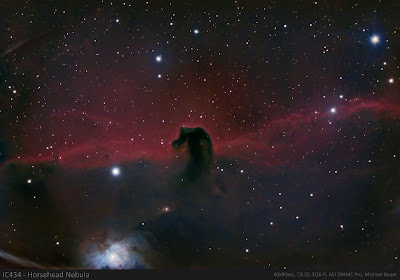PixInsight - a quick update on post processing
When I started with astrophotography last year I exclusively worked with free software for the post processing tasks. I mostly used SIRIL and a little bit of Gimp as tools. Some of the early results I have shared in this blog. They were ok at the time, but I knew that I wanted them to become better in the long run. So early this year, during galaxy season, I was starting to search for the software environment I would be using during my next steps. In principle the free tools can be used to produce extraordinary results much beyond what I was doing at the time. However, I felt that there may be limitations at some point and apparently most astrophotographers are switching to other tools eventually. As a result of that there is very little information available about how to use the free tools specifically in astrophotography beyond the very basic tasks.
I tested a few solutions, but eventually decided for PixInsight, apparently a pretty large number of astrophotographers are using this tool and the Internet is full of tutorials and discussions on advanced topics. PixInsight is quite powerful, but as fas from self explanatory as one can imagine. However, when starting to process my galaxy images with it, following steps from an online tutorial, I was amazed how much they can benefit from the additional abilities.
Here is an example of one of the first images processed this way.
And the same object processed to the best of my abilities before that.
This is the original version of an image I processed using free tools early this year:
Here a version that I created with Pixinsight recently using the old raw data.
In both cases the images benefit a lot from the advanced processing techniques, particularly in terms of noise reduction and feature detail. As I learned this is even more so if you are making longer exposures beyond the number of frames per object I had been taking up to that point
It is probably possible to get to a similar point with the free tools, but if you have to learn a tool like Gimp from ground up without the tutorials specifically for astrophotography it is much harder.
I won‘t attempt to replicate all the PixInsight introductory tutorials here in this blog. However, I may occasionally write about the more unusual processing techniques and - to the extent that processing is becoming a bigger part of the result - start including some short processing hints on how a picture has been created.






